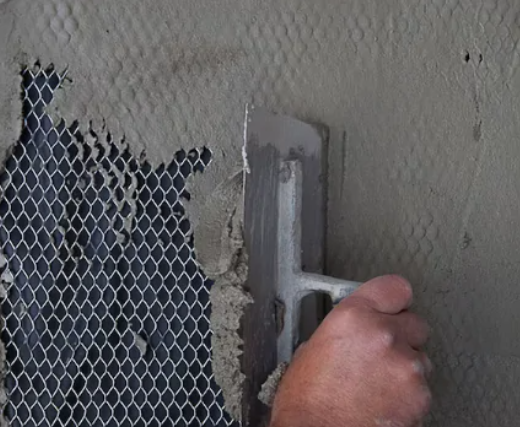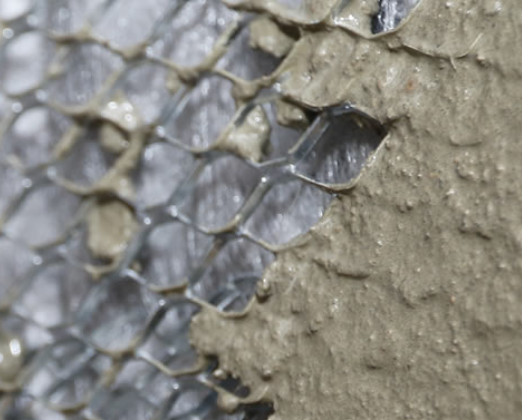- +86-13775339109
- Jessica@nq-fiberglass.cn
- No 61 Fangxian, Danyang, Jiangsu
Masonry wall reinforcement is a key aspect of construction. It ensures that walls withstand environmental stresses. It also ensures weight load and structural variation. Unreinforced masonry walls are prone to cracks due to temperature changes, shrinkage or settlement. Thus, the service life and safety of buildings are affected. To solve these problems, reinforcement such as steel mesh and expanded metal can be embedded in the gypsum or mortar layer. To provide additional tensile strength and distribute the load more evenly.
The reinforced masonry not only improves the durability of the walls, but also supports the flexibility of the building. It can use lighter materials and reduce maintenance costs. And ensure the structural performance of walls in high stress areas. Such as foundations, facades and corners. The application of steel reinforcement is essential to modern construction. Especially in areas with frequent seismic activity or large temperature fluctuations.
Wire mesh and expanded metal play a big role in reinforcing the application of plaster. And also in structural stability. Wire mesh, usually made of galvanized or stainless steel, reinforces the plaster layer. Thus preventing cracking and ensuring a smooth and durable surface. It also acts as a stress relief layer. Thus improving the overall load-bearing capacity of the masonry wall.
Expanded metal has a diamond-shaped structure and has excellent bonding properties. It forms a strong bond between the plaster and the masonry. Its perforated design improves stress distribution and reduces the risk of delamination. And enhances resistance to thermal expansion and vibration. This makes it ideal for curved surfaces where structural reliability and aesthetics are equally important. And suitable for facades and decorative features. In addition, these materials contribute to sustainable building practices by extending the life of the wall and reducing the need for maintenance. By embedding wire mesh or expanded metal during the construction process, builders can ensure the resilience of residential and commercial projects. While maintaining the aesthetics of the wall.

While both steel mesh and expanded metal are used for masonry reinforcement, they differ significantly in design and application:
Both materials provide critical benefits for masonry reinforcement:
Reinforcing masonry walls with mesh is essential to address common structural challenges, particularly cracking. Over time, masonry structures experience stress due to temperature changes, settling, or load variations, which can lead to unsightly and dangerous cracks. Steel or fiberglass mesh embedded within the wall helps distribute stress evenly across the surface, reducing the risk of localized cracking. This reinforcement acts as a support framework, improving the wall’s resistance to shear stress and preventing damage caused by material movement.
Mesh significantly improves the bond between the plaster layer and the masonry surface, ensuring a durable finish. The mesh provides a textured base that holds the plaster firmly, reducing the chances of peeling, swelling, or delamination. This is particularly important in environments with fluctuating humidity or temperature, as it allows the plaster to maintain adhesion over time. Fiberglass mesh is particularly effective for thin plaster layers, while steel mesh is better suited for thicker applications.
By integrating mesh into masonry walls, builders can enhance the structural stability of the entire assembly. Mesh reinforcement not only increases the wall’s load-bearing capacity but also ensures that the structure can withstand environmental and mechanical stresses. For example, expanded metal (Exmet) mesh and steel mesh are often used in high-load areas like bridges, industrial buildings, and tall structures. These materials prevent the spread of cracks and add rigidity, helping walls resist deformation under stress.
Incorporating mesh reinforcement is a cost-effective way to extend the lifespan and safety of masonry walls, making it an indispensable component in modern construction practices. For applications ranging from residential to industrial projects, selecting the appropriate mesh type—whether fiberglass, plastic, or steel—ensures optimal performance based on the specific requirements.
Horizontal cracks in plaster walls are common and often stem from the following causes:
Concrete block walls, while durable, present unique challenges that mesh reinforcement effectively addresses:

When selecting mesh for masonry reinforcement, it’s critical to evaluate several factors to ensure durability, functionality, and cost-effectiveness. Below are insights into the key considerations and types of mesh to guide your decision-making.
For optimal results, align the mesh choice with your project’s specific requirements and consult suppliers who provide tailored solutions for masonry applications. Proper material selection enhances both the structural integrity and longevity of your masonry walls.
Attaching wire mesh to a concrete wall is an essential process for reinforcement and ensuring the strength of the structure. Here’s a comprehensive step-by-step guide on how to do it effectively:
Proper installation of wire mesh will reinforce the wall, prevent cracking, and increase the overall structural integrity.
Plastering over mesh is an essential technique for achieving a durable, smooth, and crack-resistant finish. Here’s a step-by-step guide on how to apply plaster over mesh effectively:
This method of plastering over mesh not only enhances the durability of the plaster but also prevents issues like cracking, ensuring a long-lasting finish for walls or ceilings.
| Step | Details |
|---|---|
| Tools and Materials Needed | Plaster mix (with bonding agent, if necessary), Mesh (fiberglass or metal mesh), PVA glue or adhesive, Trowel and float, Speed skin or plastering trowel, Measuring tape and scissors |
| 1. Prepare the Surface | Ensure the wall is clean and free of loose debris. Remove old paint and patch cracks or holes. Apply a bonding agent (e.g., PVA glue) to the wall and let it dry. |
| 2. Cut and Position the Mesh | Roll out and cut the mesh to fit the wall. Use scissors or a knife for fiberglass mesh. Ensure proper overlap at seams (50mm) for secure placement. |
| 3. Secure the Mesh | Use adhesive or thin-set mortar to secure the mesh. Alternatively, use nails or staples for larger applications. Ensure the mesh is taut and flat. |
| 4. Apply the First Coat of Plaster | Mix plaster according to instructions. Apply the first layer, ensuring the mesh is fully embedded. Spread plaster evenly with a trowel and avoid air pockets. |
| 5. Smooth the Surface | Smooth out rough areas after the first coat firms up using a speed skin or float. Address frayed mesh or visible joints with scrim tape. |
| 6. Apply the Second Coat | Once the first coat is dry, apply a thinner second coat for a smooth finish. Use standard plastering techniques for an even result. |
| Tips for a Smooth and Durable Finish | – Avoid thick layers: Too much plaster in one layer can crack |
These steps ensure a long-lasting, crack-free finish while preserving the integrity of masonry walls.
Wire mesh is versatile and can be applied to a variety of wall types, including brick, concrete, and plasterboard. However, the choice depends on the specific wall condition and purpose. For instance, welded wire mesh is ideal for concrete reinforcement due to its tensile strength, while lighter meshes can be used for plastering over uneven surfaces to enhance durability and prevent cracking.
Reinforced plaster walls, when properly installed and maintained, can last several decades. The lifespan depends on factors such as the quality of materials, exposure to environmental elements, and regular upkeep. Wire mesh and expanded metal reinforcement minimize cracking and enhance durability, significantly extending the wall’s life.
The choice between expanded metal and wire mesh depends on the application:
Steel mesh and expanded metal are indispensable for reinforcing masonry walls, ensuring structural stability, and enhancing the longevity of plastered surfaces. Steel mesh offers excellent tensile strength and flexibility, making it ideal for preventing cracks and distributing loads evenly in standard applications. Expanded metal, with its rigid and textured design, provides superior plaster adhesion and is perfect for heavy-duty or intricate masonry projects.
Both materials address common issues in masonry, such as horizontal cracks and poor plaster adhesion, by improving overall wall strength and resistance to environmental stresses. The application of these reinforcements also facilitates smoother plaster finishes and minimizes maintenance needs over time.
By choosing the appropriate mesh type based on factors like wall conditions, load requirements, and project scope, homeowners and builders can achieve durable, aesthetically pleasing, and cost-effective results. Leveraging these reinforcements not only enhances construction quality but also reduces the need for frequent repairs, ensuring long-term performance and value.
16 years + Manufacturer of Fiberglass mesh & Tapes Products, Don’t miss the opportunity to get the best quality products with the most competitive price.
Factory add:Fangxian Town, Danyang, Jiangsu, China, 212333
Danyang NQ Sport And Fitness Co., Ltd
16 years + Manufacturer of Fiberglass mesh & Tapes Products, Don’t miss the opportunity to get the best quality products with the most competitive price.
Factory add:Fangxian Town, Danyang, Jiangsu, China, 212333